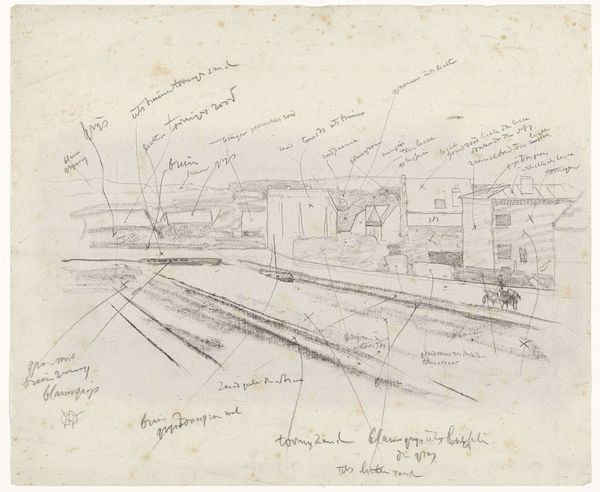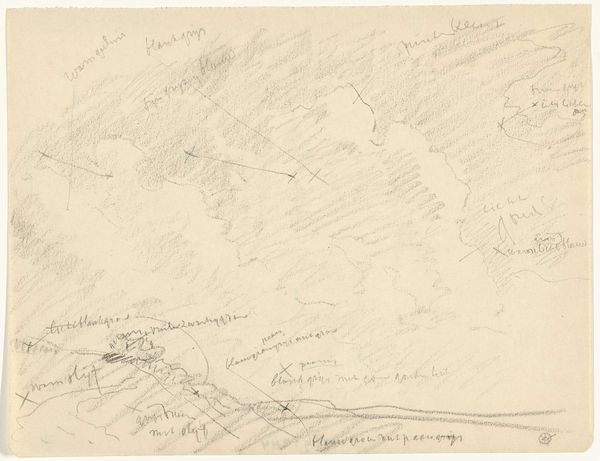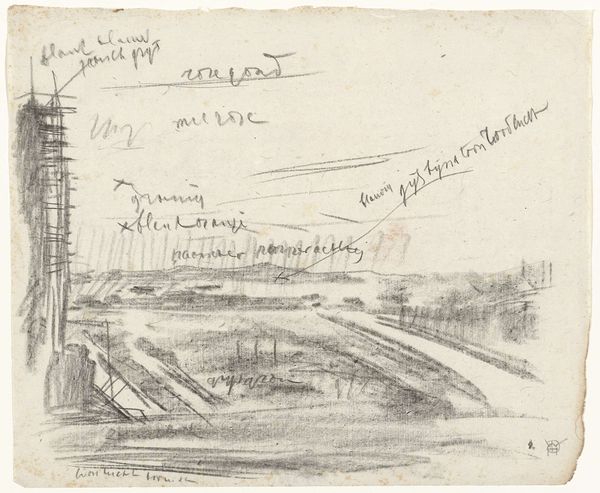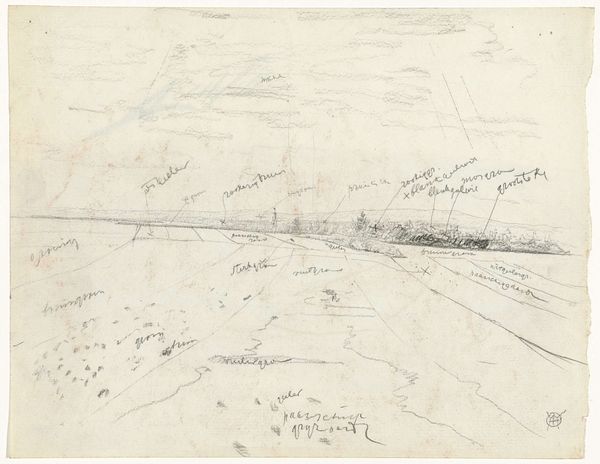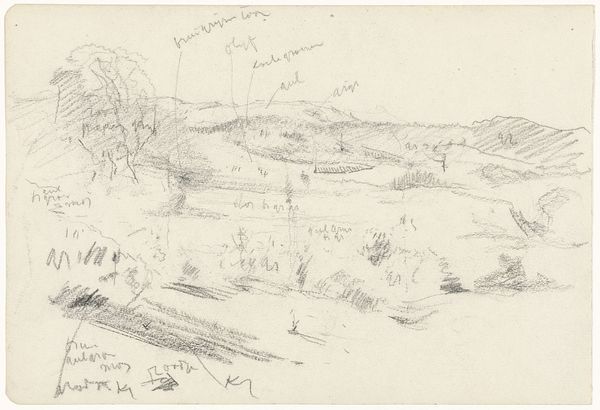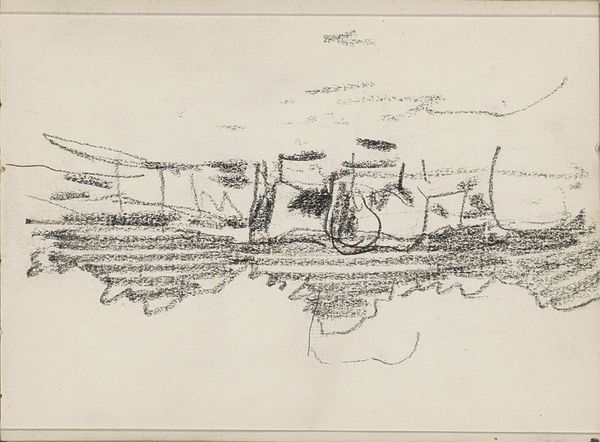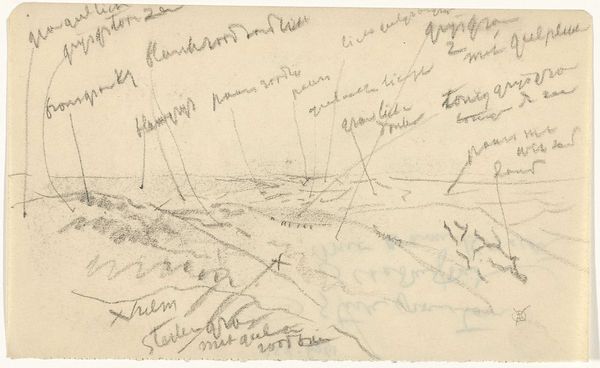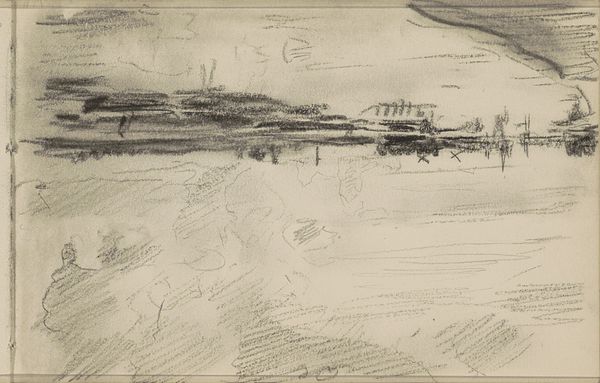
drawing, pencil
#
drawing
#
dutch-golden-age
#
landscape
#
pencil
#
realism
Dimensions: height 219 mm, width 283 mm
Copyright: Rijks Museum: Open Domain
Curator: Welcome. Today, we'll explore "Tuinbouwgronden en een heuvelrug op de horizon," or "Farmlands and a Horizon with Hills," by Gerrit Willem Dijsselhof. Created sometime between 1876 and 1924, this work is a pencil drawing currently residing here at the Rijksmuseum. Editor: It strikes me as raw. The immediate feeling is one of observation—the artist rapidly documenting the lay of the land, the sky a canvas for notes rather than atmosphere. Curator: Indeed. The landscape, divided into meticulously marked sections, invites us to consider the labor embedded in each portion of the field. You can practically trace the artist's hand at work—examining pencil strokes and notations revealing Dijsselhof’s process. Consider the accessibility of this medium too. What does it say about art-making during that era when the distinction between sketching as craft and finished product was getting blurry? Editor: Precisely. Beyond just marking the crops, the annotations surrounding it also point toward a very particular perspective. We see not only the geography of the field but also its envisioned hues, “dark peony, light peach, white landparcels," all of which invites a conversation about agrarian societies—of our social engagement with, even control over, our landscapes. Does this point to land ownership issues? What might a material analysis of those notes indicate? What dyes or inks did he have easy access to, which he might suggest the final rendering might use? Curator: And looking beyond the land to the structures along the horizon gives us an understanding of materiality of place and working structures themselves. Consider that structure: a simple shelter in the landscape, a sign of labor, perhaps also of community. How do those factors influence perception and social structure for people experiencing such spaces? Editor: Yes, seeing that this work hangs in the Rijksmuseum connects to debates around labor, representation, and accessibility in the Dutch Golden Age. How does this intimate sketch, seemingly born out of someone’s day-to-day encounters, challenge or reaffirm narratives of Dutch societal advancement at the time? It asks about who has the power to see—and, critically, represent—whom. Curator: The convergence of craft, record-keeping, and this social gaze makes it a powerful testament to the everyday experiences woven into grand narratives. Editor: Precisely. We are left contemplating what such detailed engagement with landscape reveals about societal norms and their reflection, perhaps even redefinition, through art.
Comments
No comments
Be the first to comment and join the conversation on the ultimate creative platform.
